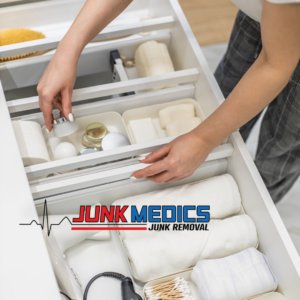When you purchase a home, the first thing that often needs to go is carpeting. Even if this flooring option is relatively new, you never know what the previous occupant might have been doing in each room.
What could be lurking in the padding or on top of the subfloor? It’s a thought that makes many homeowners shudder.
Although you can hire professional carpet installers who will remove your old flooring for an additional fee, it’s often cheaper to do part or all of the demo work yourself. If you need help with its disposal later, a professional junk removal specialist can provide an affordable alternative.
Here are the steps to follow when you’re ready to get rid of that old carpet in your home for good.
Step #1: Prepare the Room
You might need to remove doors, wall trim, baseboard heaters, and similar items before pulling the unwanted carpet. However, if you carefully pry everything off, you can reuse them once the flooring project is complete. The carpet might run-up to your wall without being tucked underneath it. In that situation, you might be able to skip to the second step.
Step #2: Cut the Carpet into Strips
It helps to use a utility knife when cutting the unwanted carpet. If you create thin strips across the room, it’ll be easier to manage the materials. Of course, you’ll need to put some effort into the process to drive the blade through the backing, but you also want to avoid impacting the subfloor.
Step #3: Pull Up and Roll the Carpet
You’ll want breathing protection, goggles, and gloves for this step. When you pull up the carpeting, all the trapped allergens and dust get released into the environment. Start rolling it from one wall to the next with each strip until you have a manageable size without being bulky. Use duct tape to secure the carpet into a roll. Continue progressing across the room until all the carpeting is gone.
Step #4: Remove the Padding
Some installers used carpet padding that was glued to the floor. Depending on the age of the material, it might roll up into strips as the carpet did. You can secure those with duct tape. If you have foam padding, it will pull up without much effort. It helps to have a garbage bag available to prevent the debris from spreading around the room. Once you have that material gone, you’ll want to pull out any staples or clips that remain on the floor.
Step #5: Remove the Tack Strips (Optional)
If your tack strips are in good shape, you can leave them along the wall if you intend to install a new carpet. When they need to be removed due to mold, mildew, or damage, it helps to use a thin crowbar to lift the sharp tacks from the floor. Some products require a hammer and a paint scraper to get underneath for the lift.
Step #6: Clean the Area
Once you’ve removed the carpet, padding, and tack strips, your subfloor is ready for a good cleaning. It helps to have a shop vacuum available for the dust and debris you’ll find waiting there. Try not to use moisture on the subfloor to prevent potential issues with expansion that could delay your new flooring installation.
Once you have everything removed, you can contact a professional junk removal specialist in your area to take care of the unwanted items! At G.I. Junk Away, our expertise can be your next best asset when you have things that need to disappear. Contact us at (760) 896-4473 to start the conversation or visit our website at
https://gijunkaway.us/ for more information.





